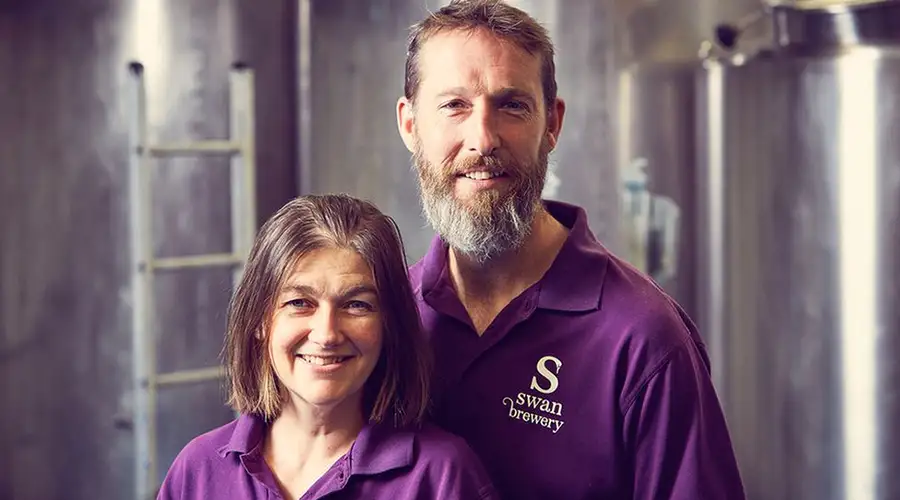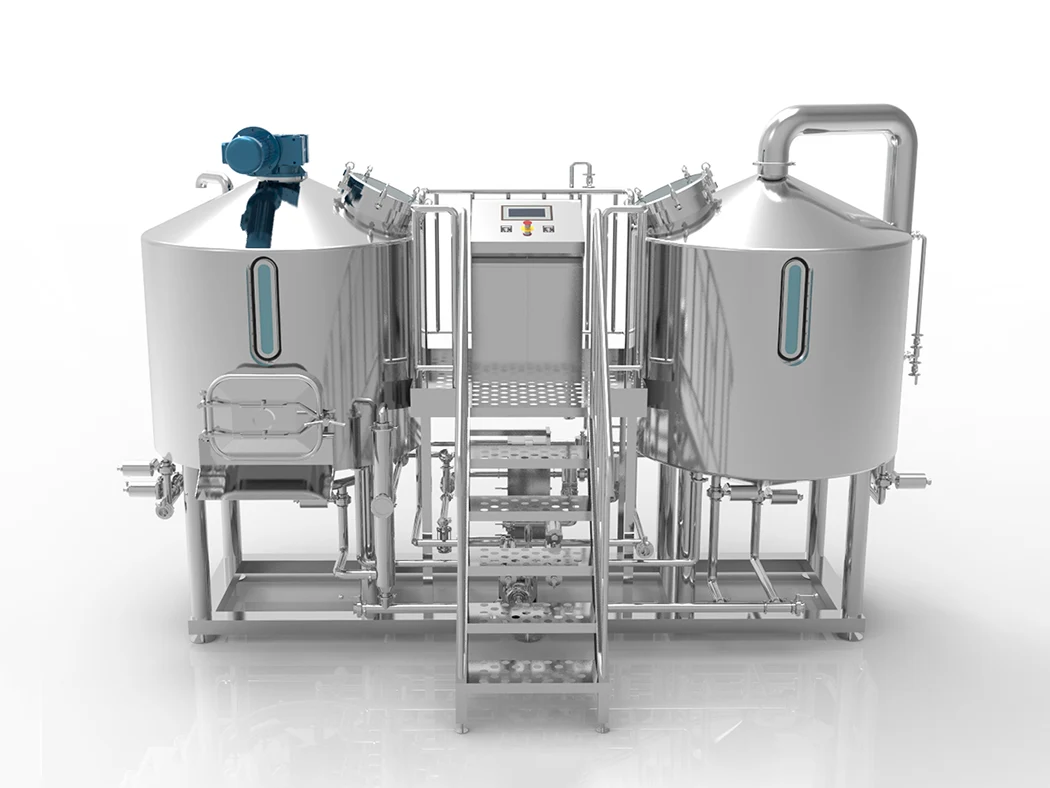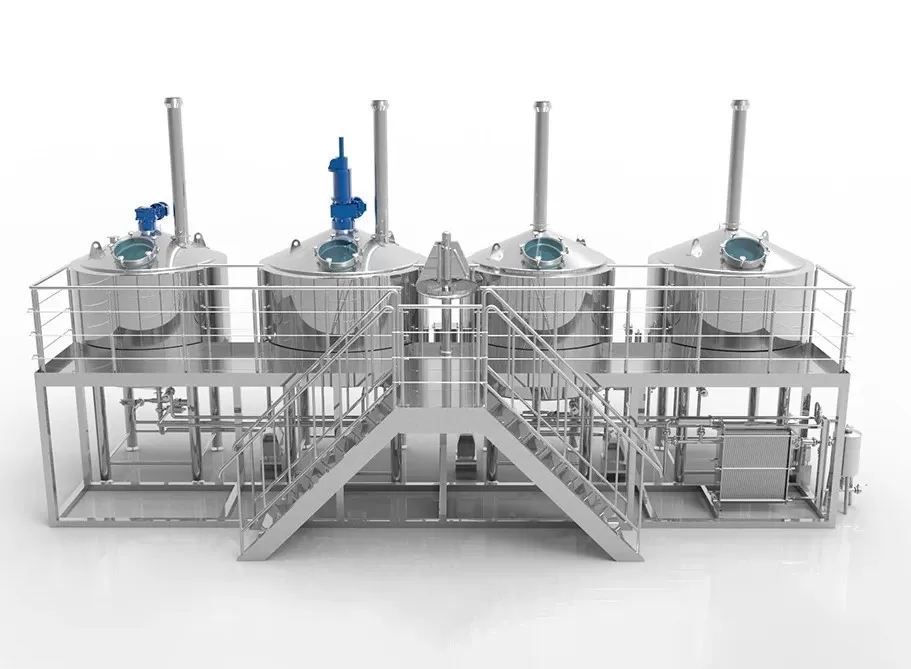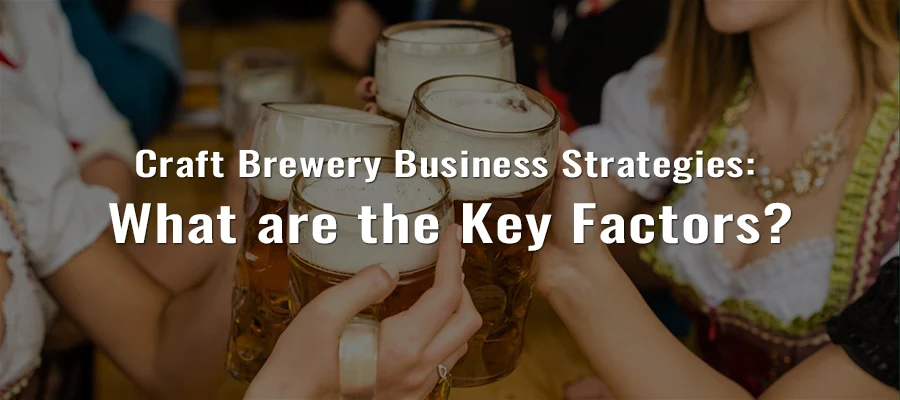As a professional brewing equipment manufacturer, research and exploration of global market investment is essential. From the original Sumerian beer to today’s craft beer, beer has become the world’s most popular alcoholic beverage. With the continuous improvement and innovation of raw materials, brewing process, stability, properties and flavors, the consumer market has also evolved into an imaginative competition around “End Demand”.
In the beer market, demand changes play a key role in future industry dynamics. We have learned from our conversations with past partners that there is growing investor interest in studying consumer behavior from a marketing perspective, especially in craft and premium beer. Craft brewery’s regional end-consumption research is mainly reflected in the age, gender and lifestyle of consumers. Among other personal factors, beer engagement, brand familiarity, and frequency of consumption plays an important role. Furthermore, Spending power and occasion are relevant segmentation variables. Research on consumer behavior is a key factor in the competitive differentiation of beer companies. We will focus on one topic–consumer psychology, in order to help investors and partners better manage breweries.
Questo articolo analizza e discute principalmente il comportamento dei consumatori e le strategie commerciali sulla base dell'attuale situazione del mercato della birra.
1. Panoramica del mercato
What do you think of the current beer market? Since the beginning of 2022, the continued spread of the coronavirus pandemic has caused the economies of various countries and regions in the world to suffer from varying degrees of impact and changes. The impact on the beer market can be seen from the soaring prices of domestically produced or imported products out. Many microbreweries, hotels and leisure venues have closed due to government incentives and supply chain, infrastructure and other factors. News reports say Caledonian is Edinburgh’s last major brewery and its infrastructure is not up to the standards of modern production, and achieving sustainability will require significant ongoing investment, including government support.
Leominster’s Swan Brewery in the UK said in January it was closing due to the economic impact of Covid. The company is a husband & wife team run by Jimmy Swan and Gill Bullock, who have been brewing beer for local pubs, clubs, festivals and retailers for six years.
Asked by the BBC what had brought this on, Ms Bullock said it was “that combination of Covid, costs and consumer confidence”.

Gill Bullock e Jimmy Swan chiuderanno l'attività
Dalla nostra ricerca è emerso che, oltre ai fattori di forza maggiore che causano pressione sul settore, il mercato globale della birra ha continuato a crescere negli ultimi mesi. Dipende anche dalle differenze di cognizione di consumo delle fasce d'età: ad esempio, molti giovani preferiscono in larga misura consumare a casa. I consumatori chiedono più varietà e novità, il che ha stimolato la crescita dei produttori di birra regionali e artigianali.
Nel medio termine, il cambiamento degli stili di vita, l'aumento del consumo di bevande alcoliche, la rapida urbanizzazione, l'elevato reddito disponibile e la popolarità della birra tra i giovani sono alcuni dei fattori che guidano il mercato globale della birra.
The introduction of new ingredients and innovative flavors into craft beer, combined with a business model that influences the minds of consumers, will increase its appeal among the global millennial demographic. As craft beer grows in popularity, millennials in particular will have a growing preference for “diversified” beer will increase.
2. Analisi del comportamento dei consumatori nel mercato della birra
2.1 Psicologia del consumatore e influenza del marchio
Whether it is a small-scale brewery just starting out or an experienced commercial brewing stage, there should be enough leadership and entrepreneurial spirit. Build collaborations within the brewery, shape products and services, brand reputation, and focus where output is more productive – building your brand.
La conoscenza dei conti psicologici dei consumatori rende i marchi unici. I consumatori sono più attenti al valore della birra che al suo prezzo. Secondo una ricerca della Walker Information Inc. ( Walker: Customers 2020: A Progress Report ), nel 2020 l'esperienza del consumatore è andata oltre il prezzo e il prodotto, diventando un elemento centrale della differenziazione del marchio. Dare forma all'esperienza porta cinque vantaggi ai birrifici: differenziazione del prodotto, nuova competitività, fedeltà del cliente, passaparola e soddisfazione del cliente.
CASO IKEA
Scoprire la vita che si vuole vivere. Quando visitiamo IKEA, vediamo stanze modello di vari stili di design, e l'esperienza di ogni stanza porta alle persone la gioia della scoperta, l'ispirazione e la felicità per il futuro.
The IKEA experience certainly doesn’t stop there. For example, for the elderly in the surrounding communities, IKEA has delicious and cheap breakfast, and can easily take children to spend a while of parent-child time. For lovers, IKEA brings them infinite yearning to build a nest of future love. For children, IKEA has their own dream “bunk” children’s bed, as well as delicious Swedish meatballs. Beer and household items are both intuitive experiences. Consumers can hold beer in a bar to chat with friends, or lie on the sofa at home to enjoy the World Cup game.
Abbiamo consultato i partner precedenti e il loro feedback è stato che la maggior parte dei birrifici costruirà un'immagine di marca nella competizione regionale [ c'è più passione? ], che renderà il birrificio meno concentrato sul rafforzamento della capacità di offerta, ed è quello di aumentare la domanda.
2.2 Equità del marchio
Come si differenziano i comportamenti dei consumatori tra i vari gruppi di età? Per fare un confronto, le diverse fasce d'età sono state divise in generazioni X e Y. La Generazione X, quella nata a cavallo tra gli anni '60 e '70, è molto fedele ai marchi; i Millennials, a quanto pare, sono l'opposto; nati negli ultimi due decenni del XX secolo, entrambi hanno una certa capacità di spesa.
Marchio di birra | Slogan |
Budweiser | Il re delle birre |
Coors Light | La birra più fredda del mondo |
Heineken | Heineken rinfresca le parti che le altre birre non riescono a raggiungere. |
Bud Light | Siate voi stessi e fate una Bud Light. |
Corona | Corona. Lontano dall'ordinario. |
Pilsner Urquell | Pilsner Urquell. La prima birra dorata al mondo. |
Guinness | La cosa più naturale del mondo. |
Carlsberg | Carlsberg. Probabilmente la migliore birra del mondo. |
La brand equity comprende quattro dimensioni. Inizialmente, la consapevolezza del marchio era un aspetto importante, in quanto le persone tendevano a prendere decisioni in base a ciò che conoscevano bene ed erano fortemente influenzate da marchi noti nella valutazione delle loro decisioni. Le ricerche dimostrano che la sola menzione di un marchio specifico tra le persone aumenta la probabilità di un acquisto.
Secondly, perceived quality provides reasons for purchase, distinguishes brands, attracts customers’ interest, is the basis for raising prices, and improves customer satisfaction in the actual use process. Perceived quality appears to be important for both generations. Gen Xers are known to stay loyal until brands let them down, and millennials are also very sensitive to brand failures, which can lead to loss of trust and patronage.
Nel terzo caso, l'associazione di marca (immagine) è tutto ciò che riguarda il marchio nella mente del cliente ed è strettamente legata alla gestione del marchio, soprattutto in termini di identificazione e sviluppo di associazioni specifiche. Tutte le caratteristiche della brand equity hanno un impatto positivo sul comportamento dei consumatori di birra. Più alta è la brand equity della birra, più alta è la disponibilità all'acquisto e la disponibilità a pagare un premio per un determinato marchio.
Tabella 2. Preferenza dei criteri della birra in base alle fasce d'età | ||
Gen X | Gen Y | |
Prezzo | 18.5% | 28% |
Marchio | 81.5% | 72% |
L'ultima risorsa della brand equity è la fedeltà al marchio, e la Tabella 2 mostra il ruolo chiave del marchio nella scelta della birra tra le due generazioni. L'81,5% dei Gen Xers e il 72% dei Millennials considerano il marchio più importante del prezzo nella scelta della birra.
Tutte e quattro le dimensioni contribuiscono alla fedeltà al marchio perché aumentano la soddisfazione del cliente e forniscono un motivo per acquistare un prodotto.
2.3 Caratteristiche del mercato della birra
The beer market is known to be “the world’s largest selling alcoholic beverage”. Beer is the most consumed alcoholic beverage compared to wine, spirits and other alcoholic beverages. Looking back to 2007, Global beer consumption is worth around 112 billion euros. The beer industry used to be dominated by local breweries, but over the last century it has become international and has grown from a domestic market to a global market industry. The process of internationalization has continued to the present, and the concentration of the beer market, i.e. “the extent to which a few companies provide a major part of the industry’s total output”, is greatly affected by mergers or shake-ups between specific beer companies, ultimately, the microbrewery is out.
The beer market can often be described as an oligopolistic market, as a few dominant companies hold large market shares and create huge barriers to entry. Therefore, one may doubt the nature of the beer market in terms of competitiveness. Production is concentrated in the hands of a few large breweries, and horizontal mergers result in a highly concentrated market. Also, when companies acquire suppliers and retailers, a fairly high level of vertical integration occurs, resulting in very similar product mixes. The competition isn’t about price, it’s about advertising, promotions, style, and more. Barriers to entry are high because large breweries have built and experienced customer loyalty. Finally, beer companies tend to diversify into other industries such as dining or leisure to expand their strategic options.
I mercati della birra possono essere specificati in base alla dimensione del prodotto e a quella geografica. La facilità di sostituzione tra i prodotti (marche di birra) è determinata, i prodotti nello stesso mercato sono sostituti stretti, mentre i prodotti al di fuori del mercato sono sostituti molto imperfetti nel mercato interno, la sostituzione prodotto-mercato dipende dalle caratteristiche del prodotto come il contenuto alcolico e il tipo di birra (lager, premium, stout, ecc.). Dal punto di vista geografico, il mercato della birra è generalmente considerato geograficamente nazionale. I tipi di birra più diffusi sono relativamente grandi in tutto il mondo.
Beer consumption is influenced by a variety of factors: consumer demand for beer is influenced by specific beer prices, alternative and supplement prices, consumer income and product characteristics. The likelihood of becoming addicted to beer also has an impact on demand. Many studies have shown that demand for beer is a good indicator of price changes and that consumer incomes have relatively little impact on demand. When demographics are considered, men tend to drink beer more than women, and 18-44 year olds are more likely to find beer popular than those 45+. Generally speaking, beer is often drunk among a group of friends or other social groups who like to drink the same style of beer. This is likely to influence individual preferences and cause peer effects. Furthermore, consumption depends not only on the individual himself, but also on the social context in which the product is consumed, especially by whom. As a result, consumers may change preferences due to human contact with friends, peers, family members or others. In terms of preferences and their potential changes, beer is an interesting example. Experience and past consumption are very important aspects here, as consumers’ psychological choices determine preferences along with others’ consumption behavior and availability. Interesting research, conducted with international students, showed that the most important reasons for changes in beer consumption habits were taste change (29%), peer influence (24%), availability (31%), price (10%) and others (6 %).
3. Opportunità di mercato e tendenze future
3.1 Cognizione dell'industria della birra
L'industria della birra ha affrontato sfide importanti, come il cambiamento delle tendenze dei consumatori, e ha trasformato queste sfide in opportunità attraverso l'innovazione e lo sviluppo di prodotti alternativi. La birra è popolare in tutto il mondo e ha una profonda origine storica; la birra, se consumata con moderazione, è salutare; è una bevanda sociale, piacevole, rinfrescante e democratica il cui fascino è duraturo e universale.
Nowadays, we are witnessing changes in drinking patterns in many regions. Beer audience is getting younger. Micet Group marketing campaigns do not target individuals below the legal drinking age. cause we recognize that very young people are indeed a vulnerable group. We believe responsible consumption of beer can be part of an active lifestyle; informed consumers are responsible for their actions; the beer industry has a responsibility to inform consumers about the benefits of moderate consumption and the risks of unsafe consumption; Work with governments and public health organizations to work on effective self-regulation, promote accountability at the company and global level of the brewer’s representative organization.
Domande e risposte
In an optimistic scenario, what is the growth of the new segment as a possible reaction to the “megatrend”?
M: Nei mercati maturi abbiamo visto che le birre lanciate in determinati segmenti di mercato sono molto caratteristiche; per i piccoli birrifici in regioni speciali abbiamo lanciato lo Small Batch System e il Micro Craft System, e speriamo che altri birrifici possano conoscere le nostre attrezzature per la birra.
Come vede il futuro della ricerca sui prodotti e sulla produzione nell'industria della birra?
M: La salute dei prodotti e la tutela dell'ambiente nell'industria delle attrezzature per la produzione di birra sono molto importanti; dobbiamo mantenere l'igiene e dobbiamo assumere un ruolo guida nel settore in termini di tutela ambientale e responsabilità sociale.
10 anni fa, la ricerca del nostro settore era orientata al processo, oggi si tratta di partire dalla fine del consumo; di fronte al futuro, dobbiamo essere responsabili e riconoscere l'importanza di una cooperazione approfondita con i birrifici globali.
Shouldn’t the beer industry stay away from health claims?
M: I pericoli sono reali e il Micet Group chiede ai produttori di birra di fornire indicazioni chiare sulla salute e di promuovere i benefici di un consumo moderato di birra.
3.2 Modi per rimanere competitivi nell'industria della birra
La quota di vendita della birra artigianale sta occupando sempre più il mercato della birra. Il potenziale di mercato per i birrifici artigianali è in crescita, ma con l'aumento del numero di birrifici operativi, aumenta anche il numero di birrifici del segmento speciale.
Ecco alcune domande:
- Quanto tempo ci vuole perché l'area competitiva dimostri il suo valore?
- Quanti birrifici artigianali può sostenere l'area competitiva?
- Come rimanere competitivi?
There are signs that the craft beer industry has yet to peak, while the market potential continues to grow. With the addition of new breweries and “planned breweries,” every brewery owner should consider preparing for staying competitive.
Ecco 5 modi in cui i produttori di birra artigianale possono rimanere competitivi:
① Materie prime di alta qualità, birra di alta qualità
The main goal of any brewery is to focus on producing high quality beer. Quality beer is a key success factor. With so many beer drinkers already turning to craft beer, it’s easy for consumers to make the decision to try any style and taste of beer, which benefits the craft beer industry as a whole.
Man mano che i consumatori sono esposti a un maggior numero di birre artigianali, i birrifici acquisiscono una maggiore conoscenza delle loro scelte birrarie, con conseguenti opportunità di fidelizzazione dei consumatori. Naturalmente, anche gli intenditori di birra sono sempre più attenti alla qualità e la cosa più importante che un birrificio artigianale può fare è continuare a produrre birra di qualità per rimanere competitivo. Con l'aumento della varietà di birre artigianali sul mercato, le birre artigianali di bassa qualità saranno eliminate per prime.
② Manage Quality – Maintain Consistency
Manage your brewery production schedule and focus on consistency. If each experience is different, consumers may discover risks associated with your beer. The risk could lead consumers to switch to competitors that can give them a similar “experience”, even if the experience isn’t that great. Consistency has always been the key to every successful business. Provide consumers with a consistent quality experience.
③ Pianificare in anticipo
Make sure you plan ahead and keep up with demand. Gaining consumer loyalty can be a long process, but it only takes one single bad experience or one missed opportunity to break that trust. If your loyal consumers don’t have access to their favorite beer, they’ll accept alternatives, resulting in your loss and others’ gain.
Although consumers prefer to try new beers, which provides an opportunity for new product launches, meanwhile it can be a disadvantage if you can’t keep up with demand. Breweries can prevent missed opportunities by ensuring that their main beers are readily available in their most loyal markets. Consumers are inherently loyal, but that doesn’t mean they’ll be forever loyal to your beer.
Vendere meglio e in modo più intelligente
Whether you have a person in charge of sales or a sales team that handles orders, consumers want to know what’s going on in a brewery. In the mobile age, the ability to get real-time orders from a tablet or mobile device is now a huge benefit–the ability to view a customer’s order history, view reports, inventory, invoices and delivery notes, and more, allows salespeople to keep track of customer service outperform competitors. By tracking and managing sales opportunities, forecasting drives raw material demand planning and future production planning is smarter planning when finding new customers. Being able to do this, seamlessly integrated into the production floor, means the distillery will be constantly amazed.
Gestire la propria crescita
Infine, è necessario gestire efficacemente la crescita del birrificio. Il motivo più comune per cui i primi quattro punti vengono compromessi è l'incapacità di gestire la crescita. Con la crescita dei birrifici artigianali, diventa sempre più difficile produrre birre coerenti, di alta qualità e differenziate che soddisfino la domanda. Gestire la crescita e la complessità che ne deriva può garantire la fidelizzazione dei consumatori e aiutare il birrificio a rimanere competitivo. Gestire la crescita non è facile e richiede competenze operative e procedure sistematiche. Se a farlo sono singoli individui o sistemi frammentari, il vostro vantaggio competitivo potrebbe essere a rischio.
To achieve these goals, you’re going to need some help; Spreadsheets and bookkeeping software can’t provide that kind of help in the long run. Achieving these goals is not easy or guarantees your success, but they will provide a strong edge over the competition and help you stay ahead. You need a powerful brewery management solution that will provide everything you need to manage every aspect of your brewery. You need a brewery software/hardware solution that streamlines processes, eliminates inefficiencies and focuses only on what you do best: brewing great beer.
Indipendentemente dalle dimensioni del vostro birrificio artigianale, le soluzioni Micet Group per la produzione di birra aiuteranno la vostra azienda a snellire i processi per ottenere la massima crescita ed efficienza. La costruzione di un birrificio con sistemi multipli spesso causa problemi. Costruire sulle giuste fondamenta è fondamentale per gestire una crescita futura scalabile.
4. Innovazione per tutti
La birra ha un passato meraviglioso e un futuro brillante e il nostro settore ha l'opportunità di convincere i consumatori dei benefici per la salute derivanti dal bere birra con moderazione e del suo contributo a uno stile di vita sano.




